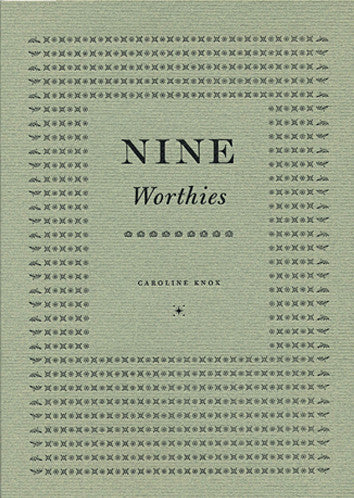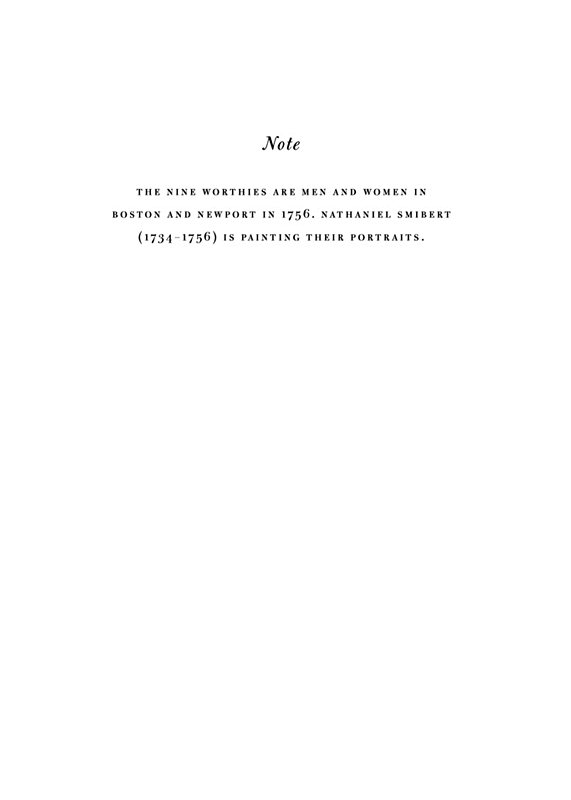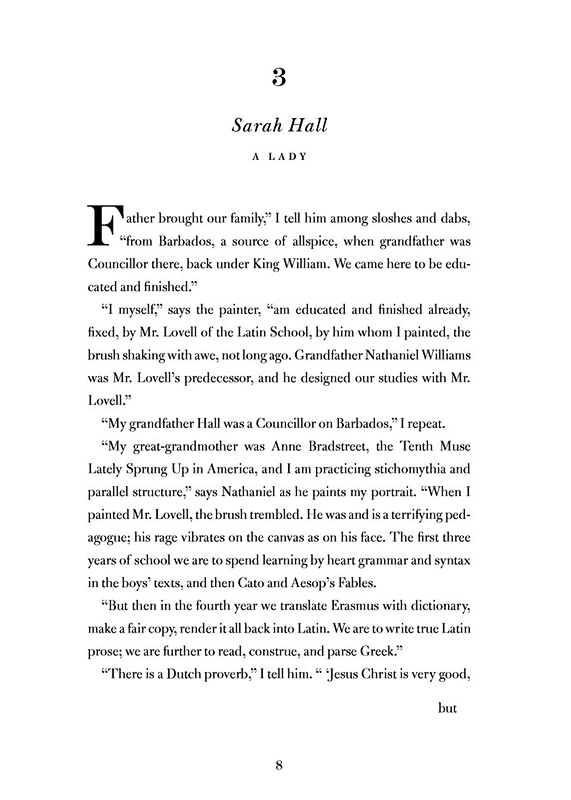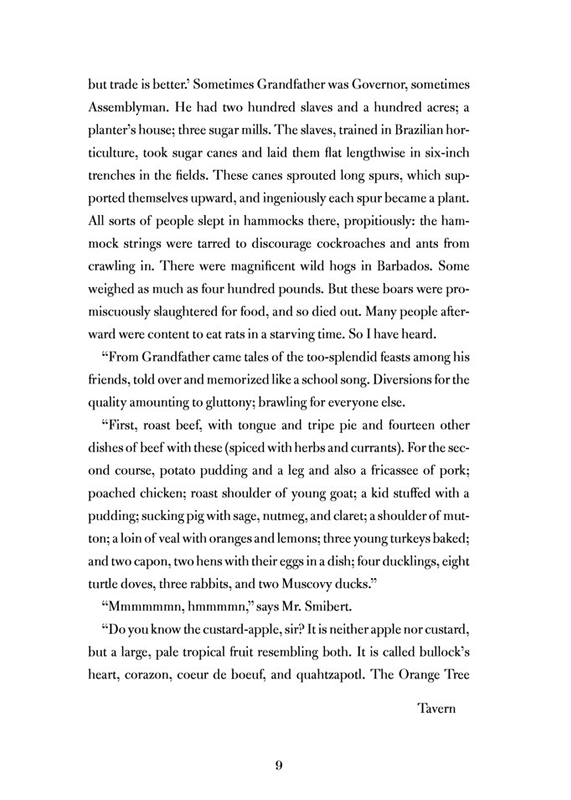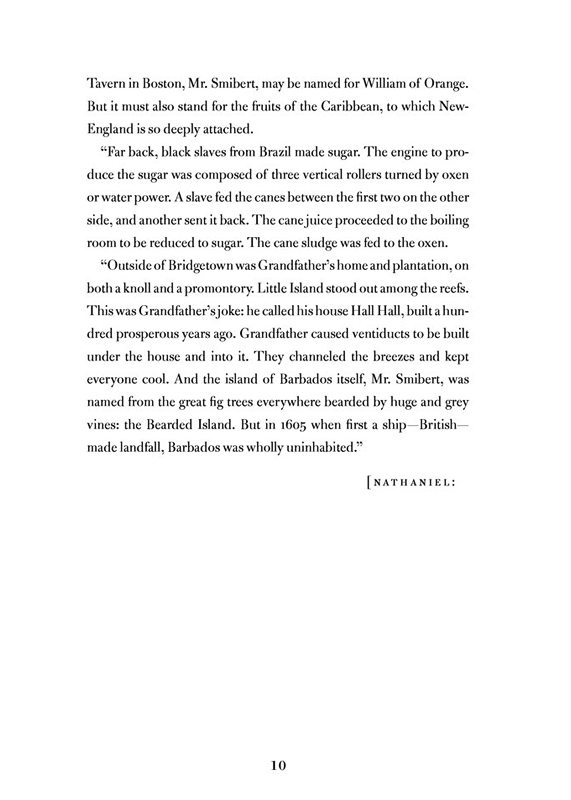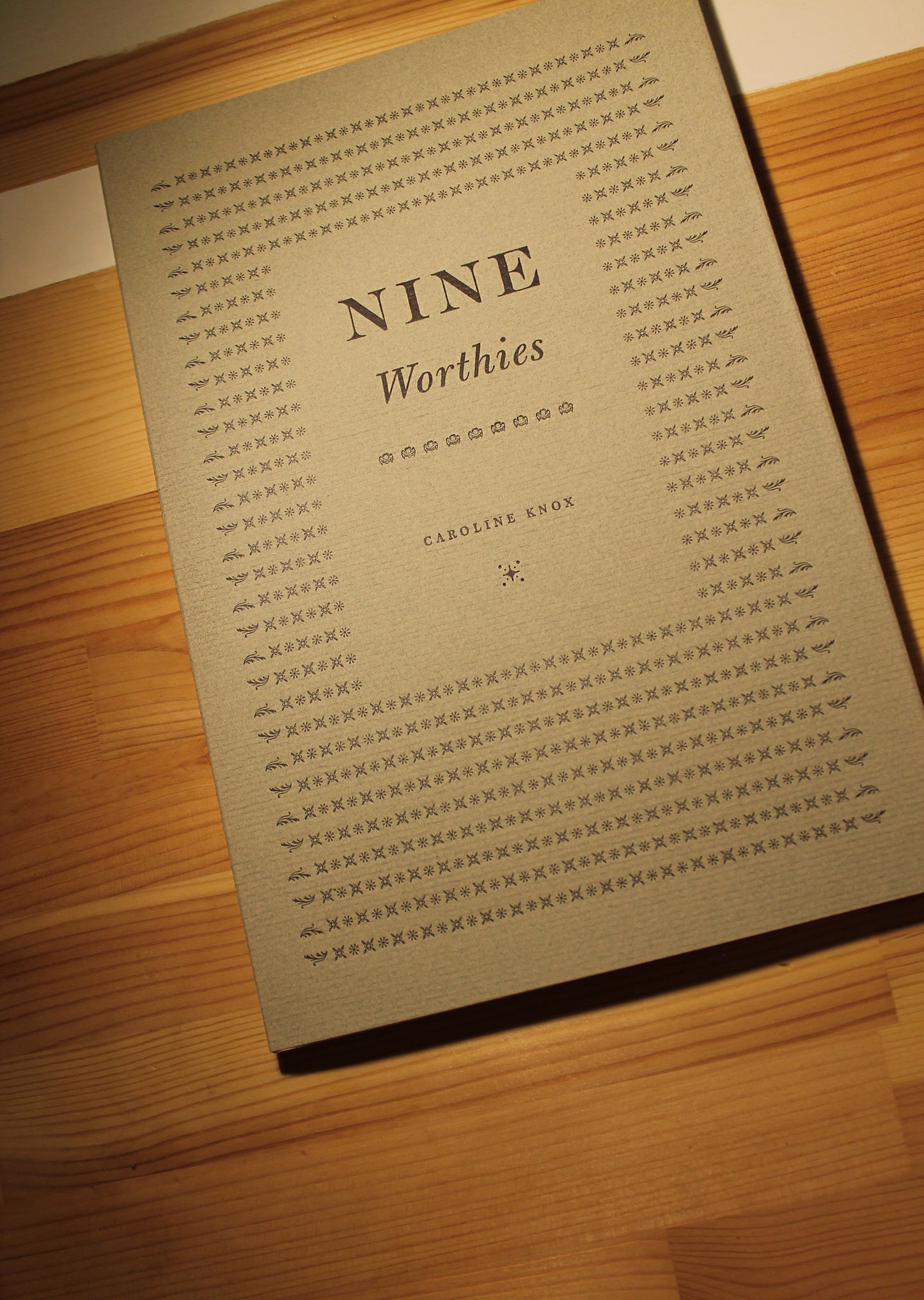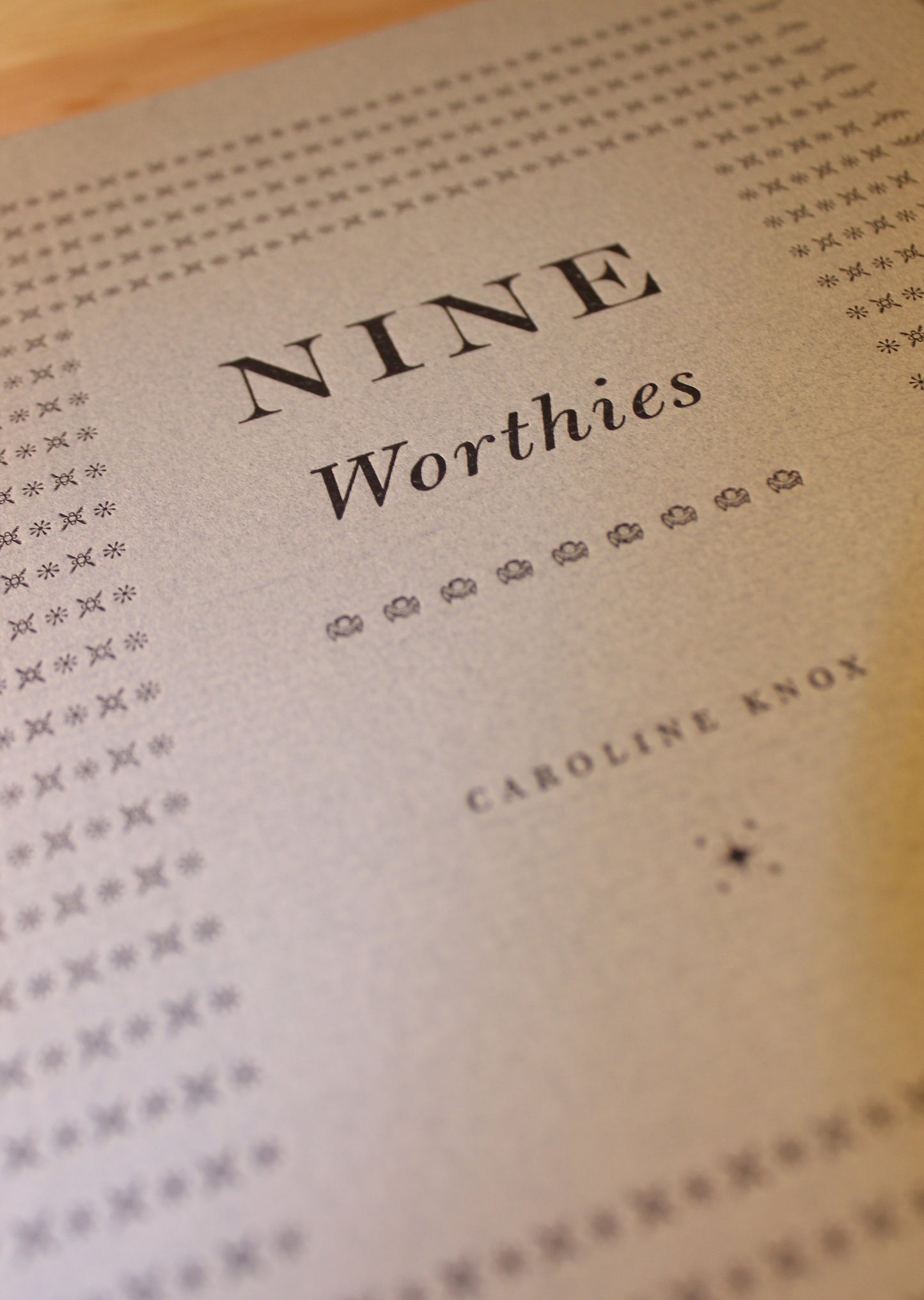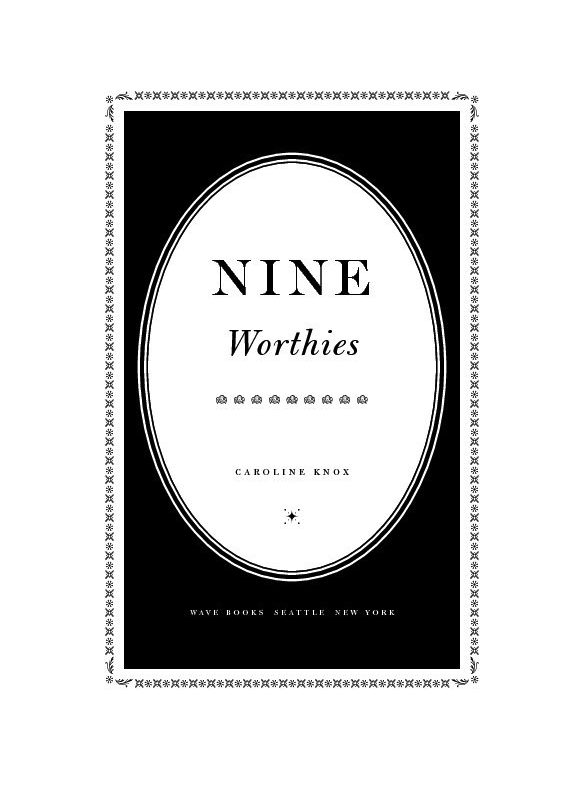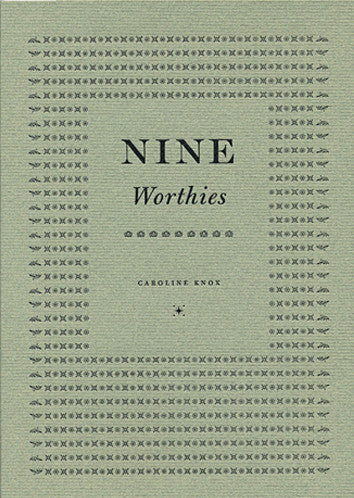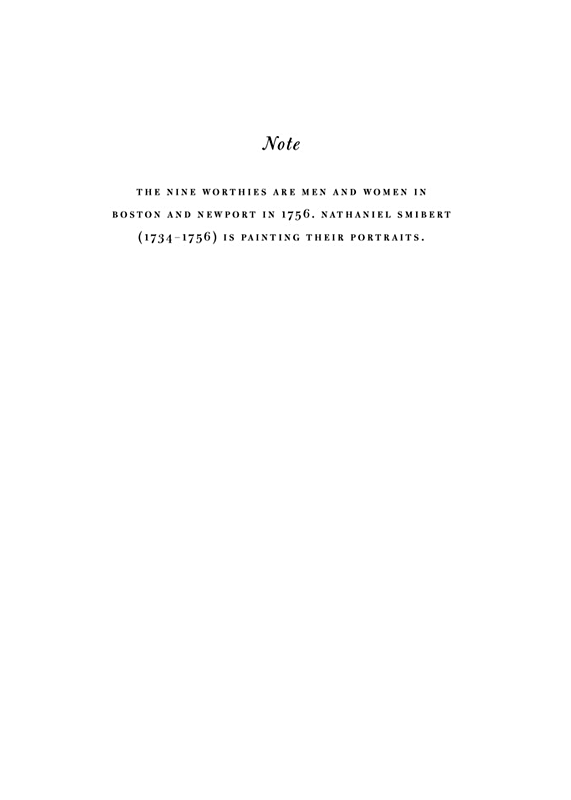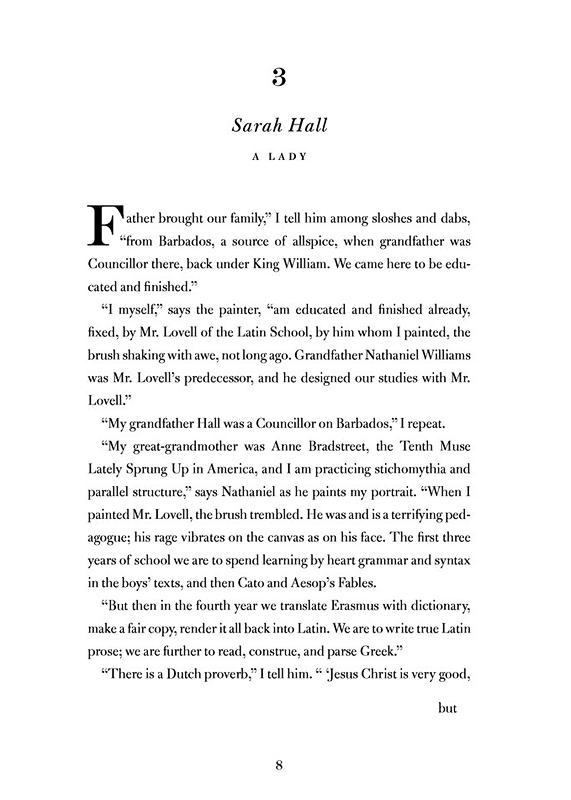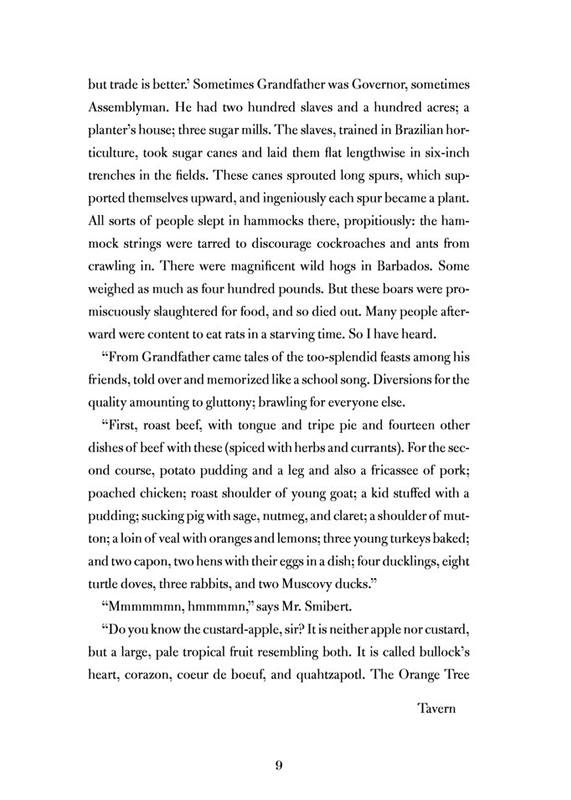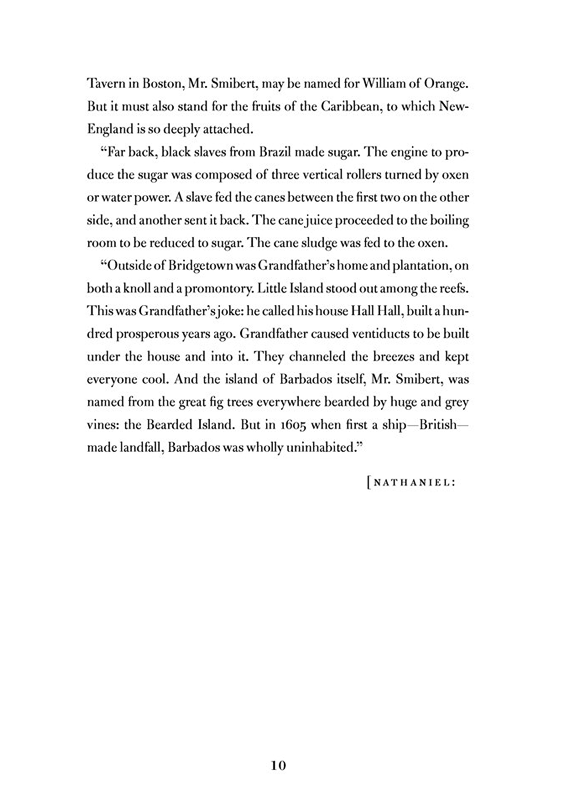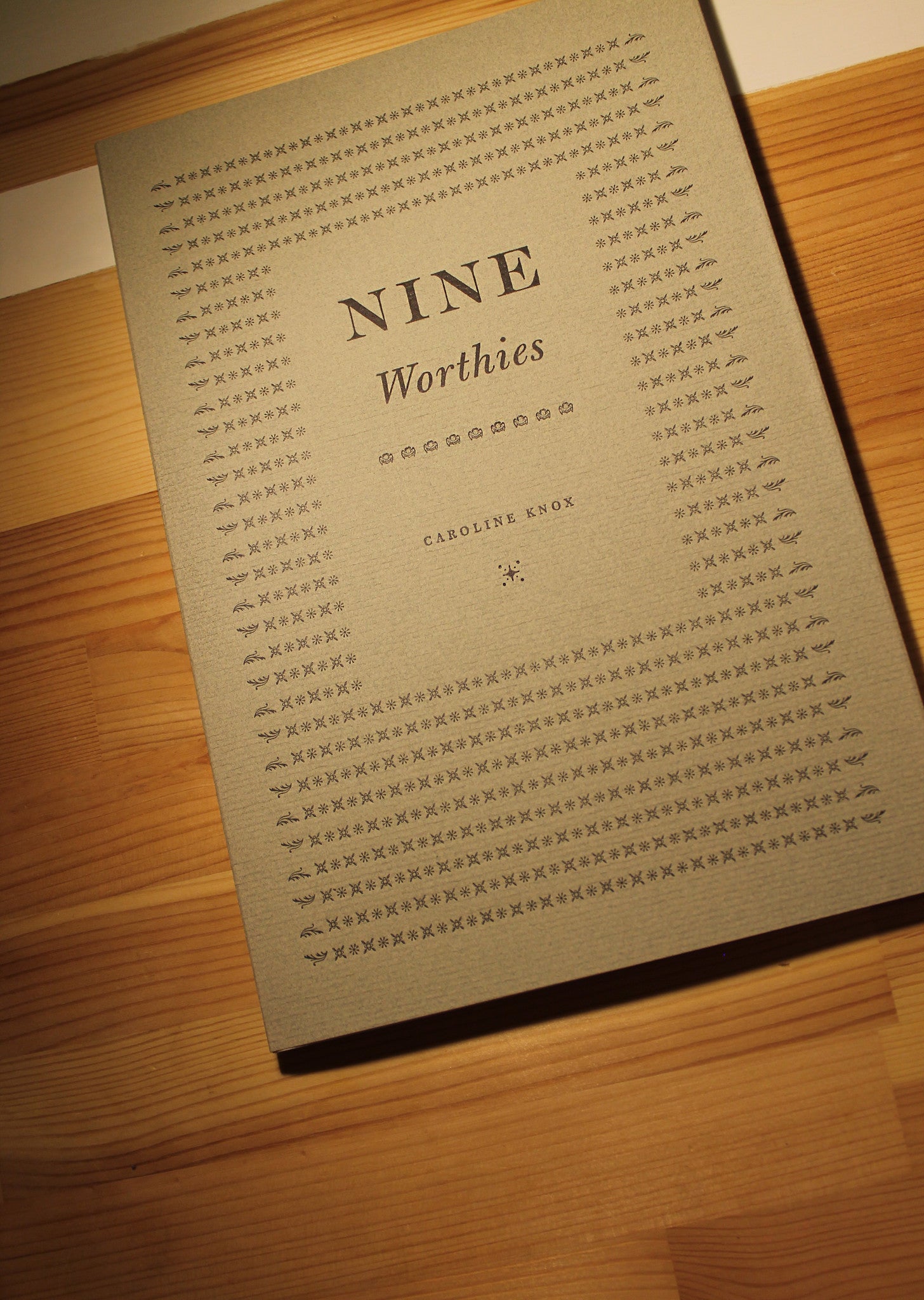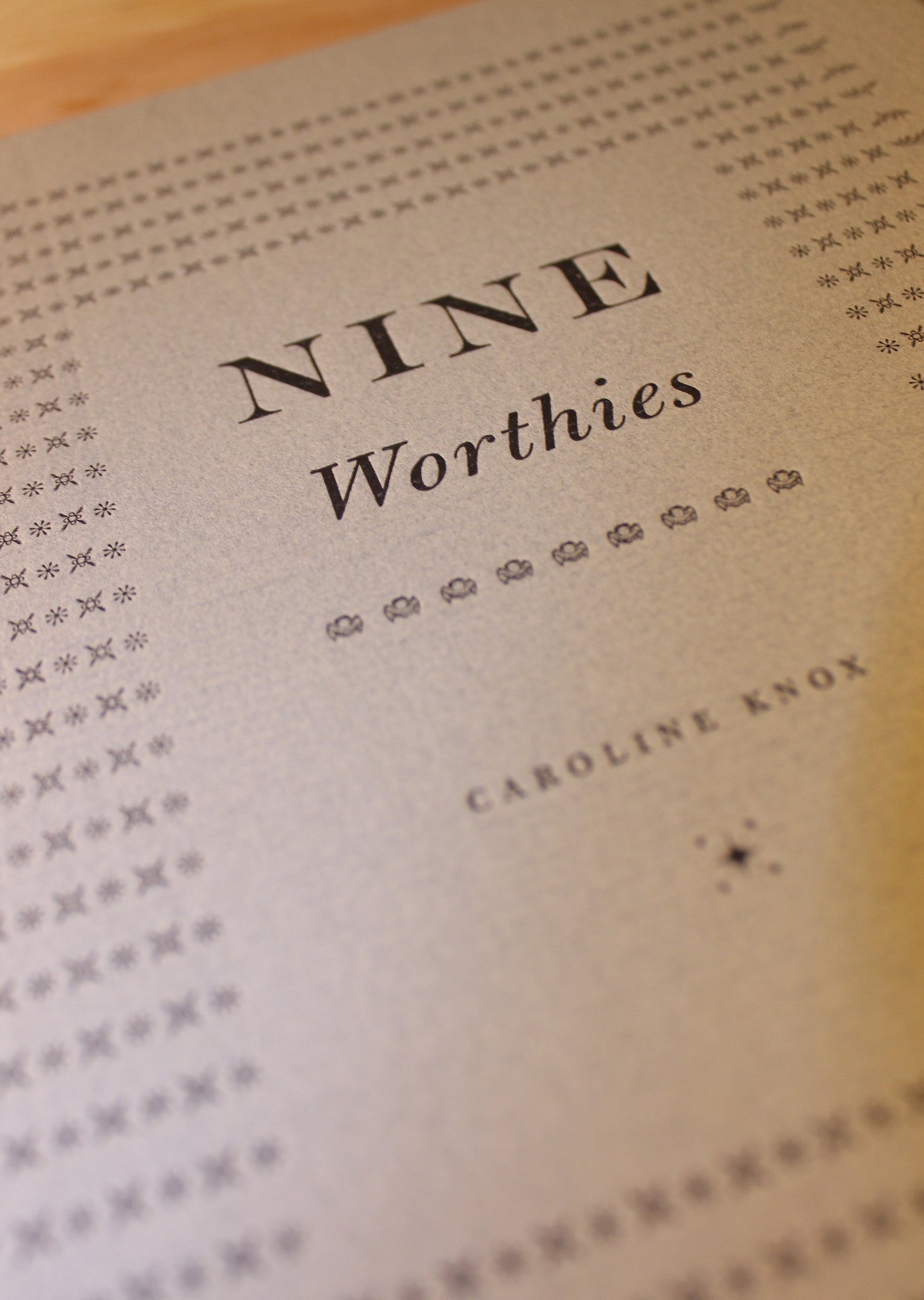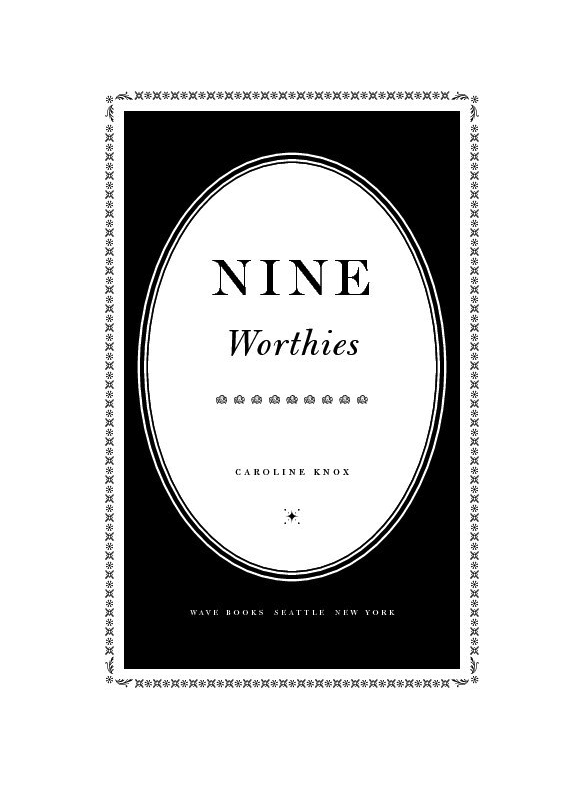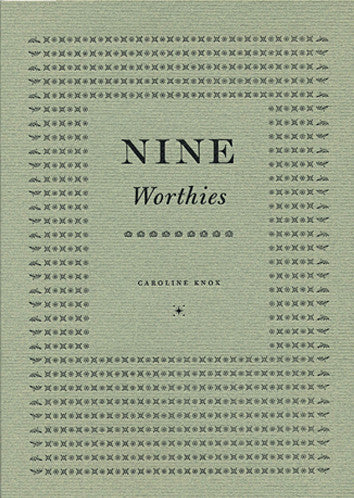
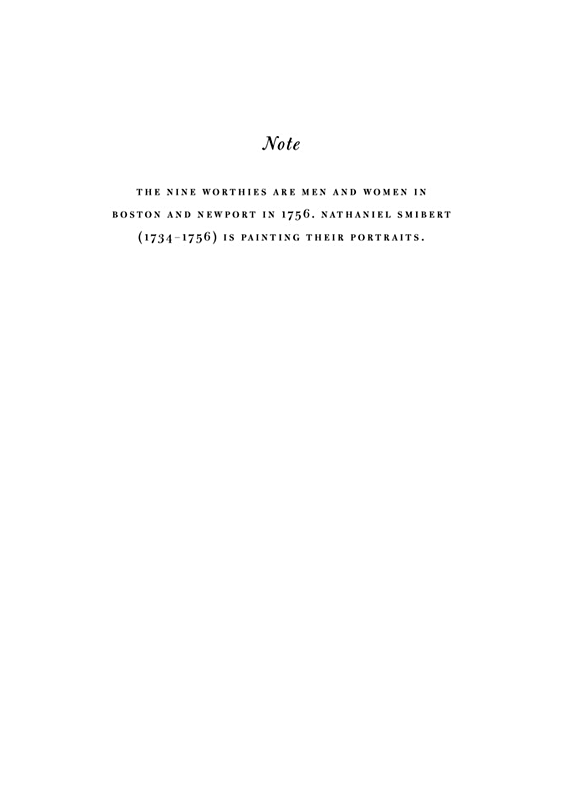
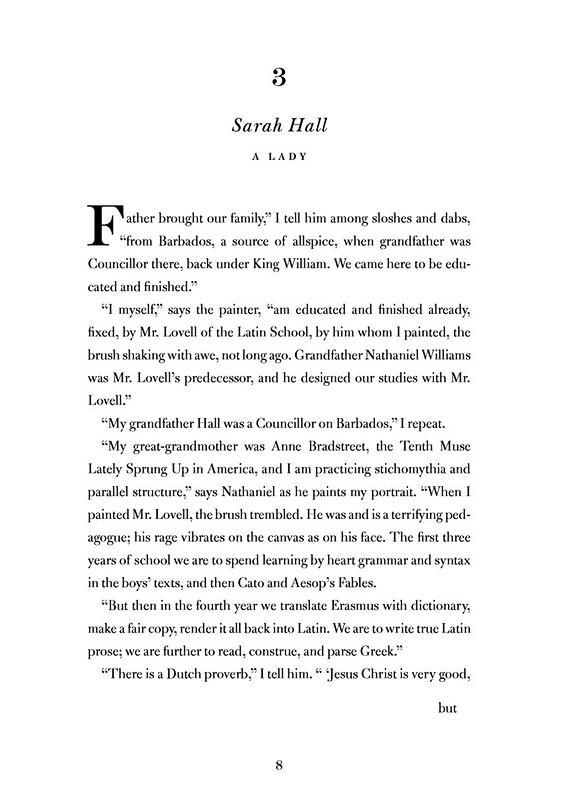
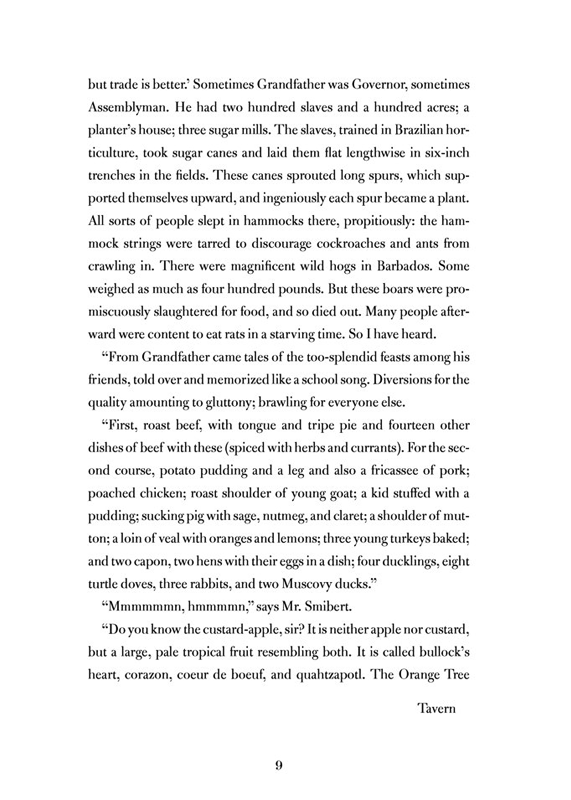
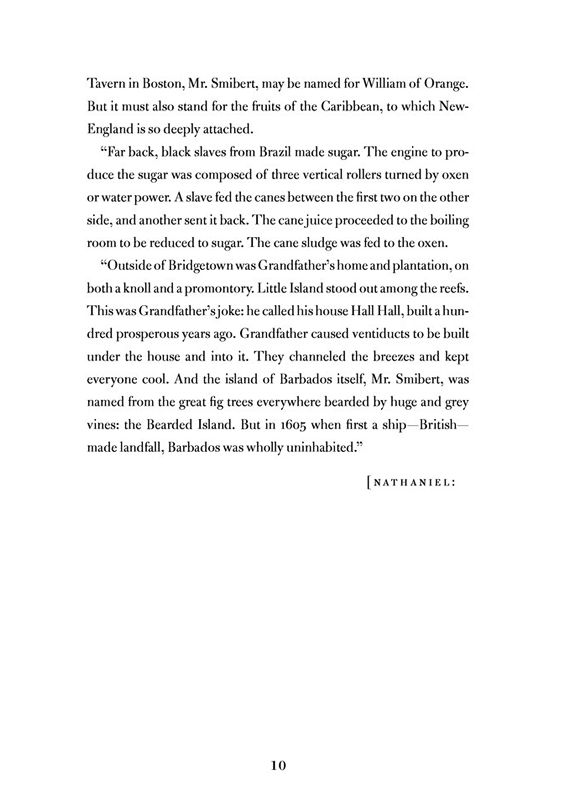
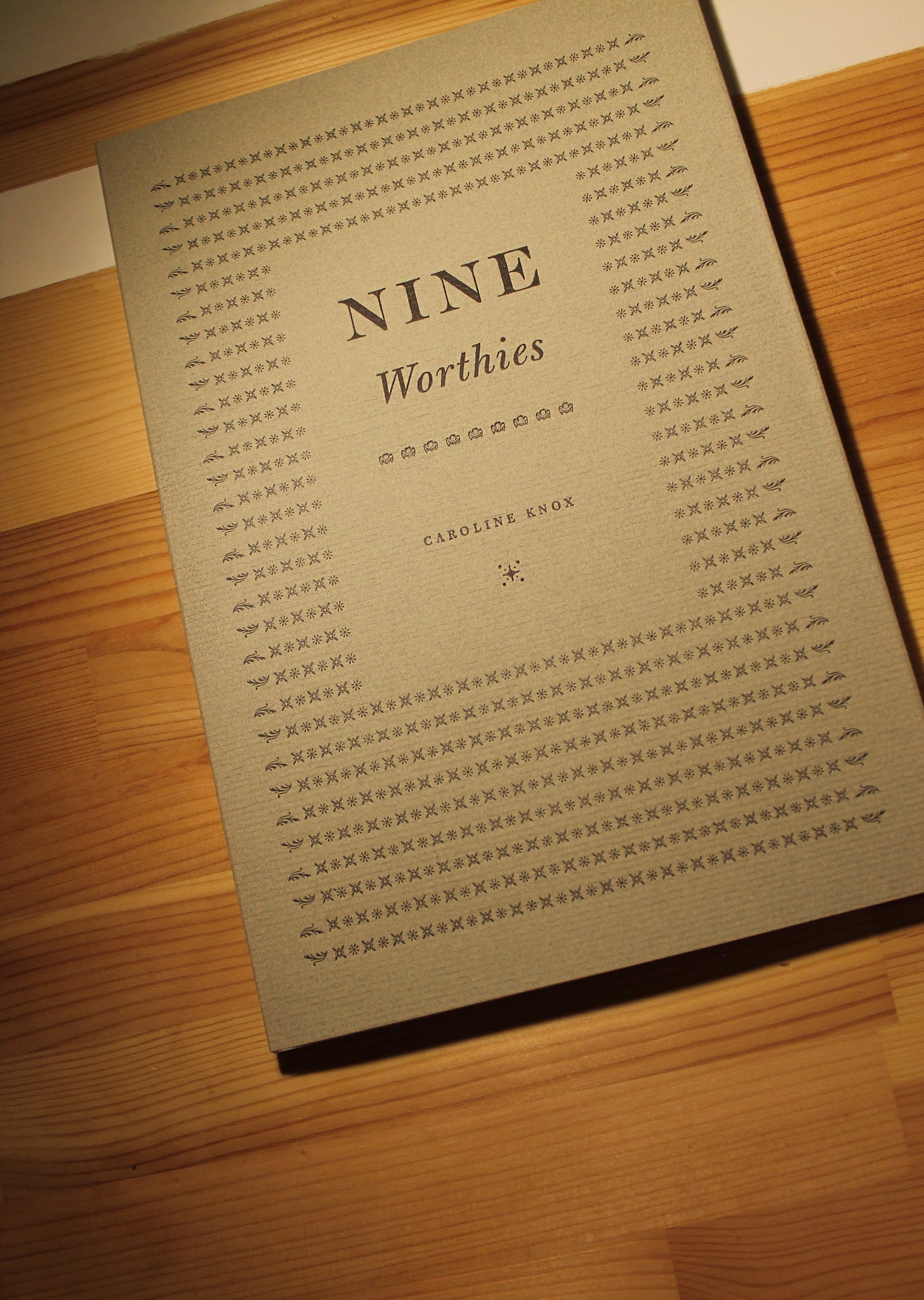
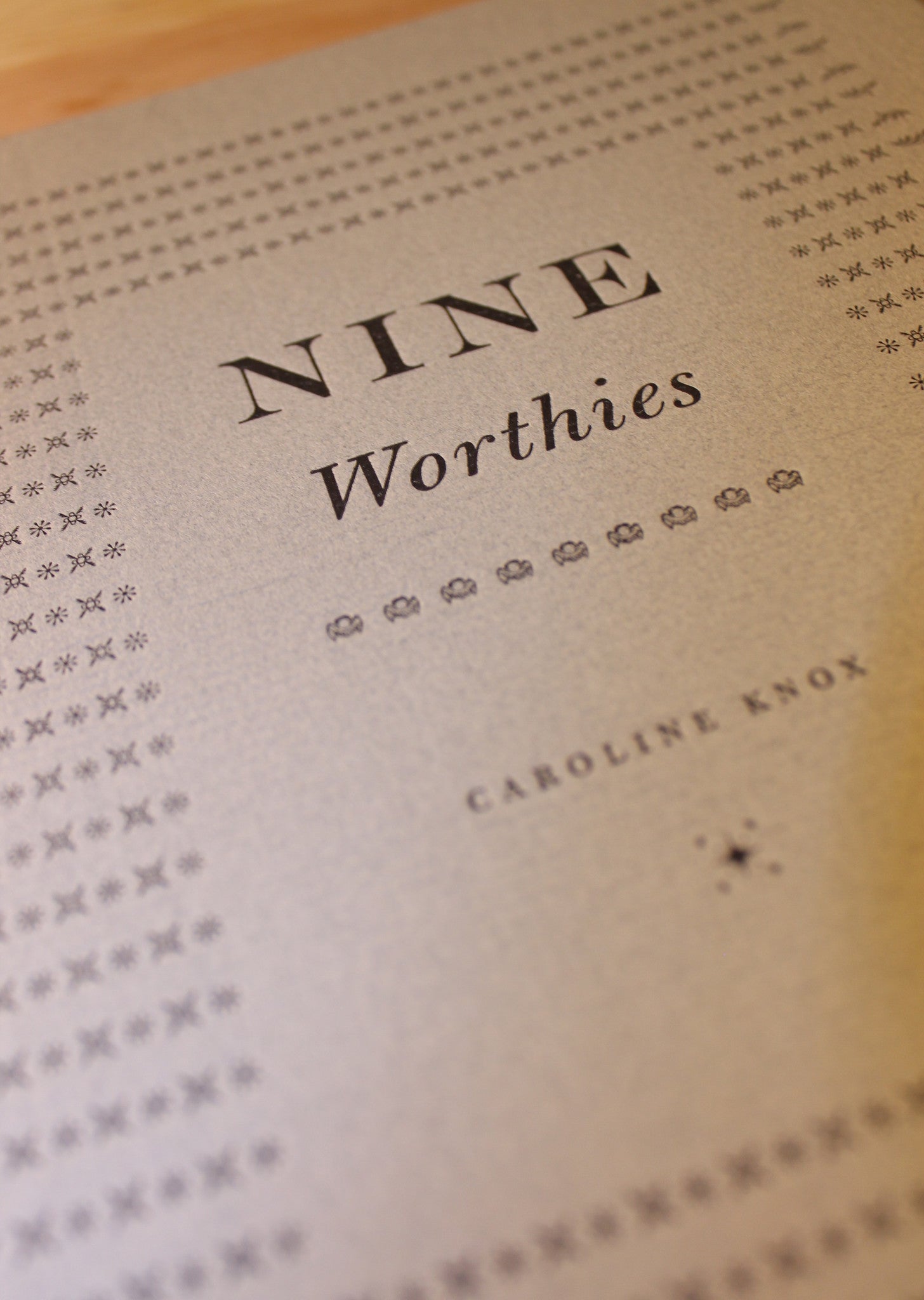
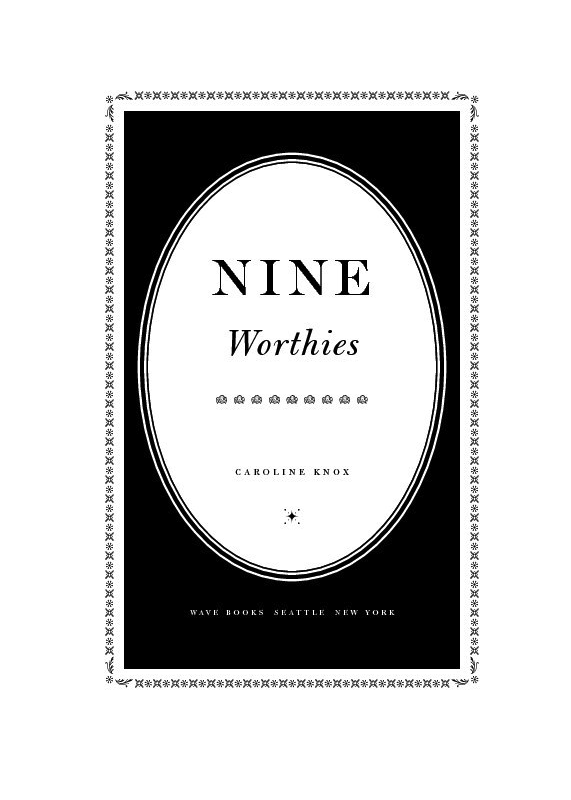
Nine Worthies
Nine Worthies
-
The Nine Worthies are men and women in Boston and Newport in 1756. Nathaniel Smibert (1734-1756) is painting their portraits.
This hand-sewn limited edition has a letterpress cover and design influenced by 18th century typesetting and binding techniques. Told in nine individual portraits, interwoven with the perspective of the artist, Nine Worthies is a stunning book from eminent poet Caroline Knox.
SOLD OUT -
Snappy bright, linguistically athletic, sometimes laugh-out-loud funny, [Knox’s] poems nevertheless hold a depth at the core of their whimsy. She casts a keen eye on humankind across the centuries, but it is not an unkind one. Her latest book is, well, rather hard to describe. Or maybe not hard to describe, just hard to codify, to place within the framework of contemporary publishing. But it is indeed an intriguing, strangely captivating thing.
Open Books
Nine Worthies is an interesting step back into the 18th century viewed through a modern perspective.
Renee Emerson, New Pages
In these poems, the many voices that emerge seem eager not so much to communicate, though their utterances are contained formally within a communicative mode, but to come into being as they speak. Knox’s poems make visible what we all experience abstractly: that language is fluid and that, like most living systems with which we interact, it makes us as we make it.
Sarah Eggers, The The Poetry -
"The End of Something: Nine Worthies and Some Paintings by Nathaniel Smibert"
Nine Worthies, a work of prose and poetry operating as a sort of historical novella, deals with the life and times of Nathaniel Smibert (1734-1756), portrait painter and son of America’s first portraitist, John Smibert (1688-1751). The father had come to America from England in 1729 with George Berkeley the philosopher, in a utopian scheme to found a theological college in Bermuda. The scheme never worked out, John Smibert stayed in Boston to paint, and his son Nathaniel followed the calling of painter. Their studio acted as the art school and museum for America.Nathaniel painted a great many works between 1750 and 1756 and then he died suddenly at age 22; no one knows how or why. (Lead poisoning? An epidemic off a ship? Tuberculosis?) He carefully followed his father’s style and content, in the English tradition of Lely and Kneller. The studio went on to become a gathering-place for the onset of Romantic painting: Copley, Trumbull, West, the Peales, many others. So the early death of Nathaniel was The End of Something, the end of part of America’s Englishness, at least in painting. And the Worthies, as they spout their notions, are unaware that much is changing, that they are on the cusp of both the Seven Years’ War and the Revolution.
As far as we know, Nathaniel didn’t leave a notebook, so there’s no record of how many portraits there were. To write something about the period and subject, I had to choose a group and a number of characters, so I took the Nine from the medieval tradition of the Nine Worthies. The list depended on who the list-maker thought was worthy -- Charlemagne, Julius Caesar, King Arthur? I picked sitters showing a diverse crowd, such as the elderly widow Mary Davie, Peter Harrison the architect, and Samson Occum the Mohegan missionary.
Much historical and art historical research has been done on the Smiberts. Maybe we won’t learn more, or not much more. Curiously, this fact made the writing assignment very inviting to me -- a subject with lots of holes in it, a theme with huge gaps. It felt modernist and post-modernist. Nine Worthies is an experiment: facts and transitions are left out not because I was avoiding them or despising them, but because I didn’t even have them. But the facts that we do have about the subject fit together well. It’s the Age of Reason, of information, exploration, the Royal Society, the scientific method. (And it’s the Age of Satire, of giving it and receiving it.) The Worthies are obsessed with the past, with ancestors and family connections, and with material culture and money.
Caroline Knox
Fall 2010
Publication Date: September 15, 2010
ISBN# 9781933517483 (7x10.5 64pp, limited edition paperback)
Couldn't load pickup availability
